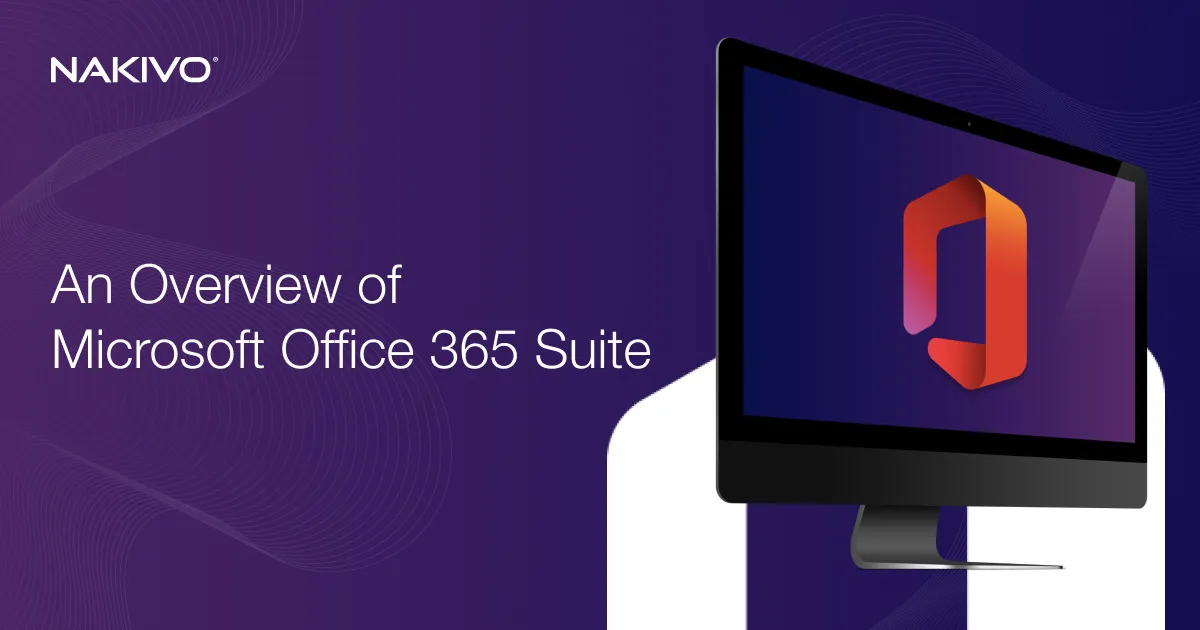How to Increase Office 365 Mailbox Size Limits
Microsoft email services are included in nearly every Office 365 subscription plan. However, Exchange Online mailbox size limits vary from one Microsoft 365 to the other. If the limit is reached, a user may not be able to send or receive emails. The fix is to expand the size of the mailbox.
In this post, we explain how to check Office 365 mailbox size limits and how to increase them via PowerShell
Mailbox Storage Limits in Exchange Online
Office 365 storage limits for mailboxes are different for each subscription plan and depend on the mailbox type and license assigned to the user. At the time of writing this post, the standard mailbox size for most subscription plans is 50 gigabytes (GB).
The Office 365 mailbox size limit for the top subscription plan is 100 GB. As for archive mailboxes, Office 365 email storage limits are 50 GB for most subscription plans. High-end subscription plans include 1.5 TB of archive storage with auto-expanding capabilities.
Storage limits across Microsoft Office 365 plans
| Mailbox | Archive mailbox | |
| Microsoft 365 Business Basic | 50 GB | 50 GB |
| Microsoft 365 Business Standard | 50 GB | 50 GB |
| Microsoft 365 Business Premium | 50 GB | 1.5 TB |
| Microsoft 365 Enterprise E3 | 100 GB | 1.5 TB |
| Microsoft 365 Enterprise E5 | 100 GB | 1.5 TB |
| Office 365 Enterprise E1 | 50 GB | 50 GB |
| Office 365 Enterprise E3 | 100 GB | 1.5 TB |
| Office 365 Enterprise E5 | 100 GB | 1.5 TB |
| Office 365 Enterprise F3 | 2 GB | Not available |
Storage limits in standalone plans
| Mailbox | Archive mailbox | |
| Exchange Server | 2 GB | 100 GB |
| Exchange Online Plan 1 | 50 GB | 50 GB |
| Exchange Online Plan 2 | 100 GB | 1.5 TB |
| Exchange Online Kiosk | 2 GB | Not available |
Make sure you choose the Microsoft Office 365 suite that best fits your business needs to avoid paying additional costs for a storage space that you might not need.
What Happens When a Mailbox Size Limit Is Reached?
There are three limits according to the configured mailbox storage quotas: warning limit, send limit, and send/receive limit. Users receive a notification message each time one of these limits is reached.
- Warning limit: This is a signal that the user is about to reach Office 365 email storage limits and should delete non-critical emails. If space is not freed up, sending emails is disabled.
- Send limit: The user cannot send emails any more. This issue can be fixed by deleting emails from the mailbox. The ability to receive emails is still available.
- Send/receive limit: The user can neither send nor receive emails until the email storage is freed up. A non-delivery report (NDR) is delivered to the sender.
Methods to Increase the Office 365 Mailbox Size
There are several methods to increase mailbox sizes for Office 365 users, but certain conditions must be met for each method. Otherwise, to free up mailbox storage, you need to archive old emails or delete messages. The methods that can help you avoid email storage issues in Office 365 are explained below:
- Upgrade the subscription plan: This method is straightforward but requires additional costs. You can buy a more advanced Microsoft Office 365 subscription that provides higher Exchange Online limits for mailboxes.
- Edit quotas: Administrators can set mailbox quotas and edit the warning limit, send limit and send/receive limit. However, these values cannot exceed the limit of the Office 365 subscription plan in use. By default, the warning quota is set to 98% of the maximum mailbox size, the send quota is set to 99%, and the send/receive quota is set to 100% of the Office 365 mailbox capacity. Office 365 administrators can edit Office 365 mailbox size limits for users centrally.
- Enable archiving: Mailbox archive allows you to enable 50 GB or 100 GB of additional email storage space in the cloud so you can archive old emails without deleting them. The top subscription plans support up to 1.5 TB of archive storage for one user. In this case, when 100 GB of archive storage is used up, another 100 GB of Office 365 online archive storage is provisioned. This feature is called auto-expanding. A user cannot use the mailbox archive for purposes other than archiving their own emails. For example, it is not permitted to archive emails of other users. While the data of the primary mailbox is stored in the cloud and can also be stored in an email client, the data of the archive mailbox is stored only in the cloud.
- Delete unnecessary data: Users can delete emails that they no longer need from a mailbox to free up storage space. You can also back up Microsoft Office 365 email data to a custom location, and then delete these emails from the Office 365 cloud storage.
Note: If you use an email client (for example, Microsoft Office Outlook) and delete email messages in the client, you need to check whether emails are also deleted on the cloud side in Outlook Online.
- If you use POP3 to receive email and a mail client is configured to leave a copy of a message on a mail server, then deleting a message in the email client doesn’t delete the message on Microsoft 365 mail servers. You need to open the web interface of Outlook Online and delete messages from the cloud email storage.
- If you use IMAP, then email is completely synchronized between the email client and email server. If you delete the inbox message from the mail client, this message is also deleted from the mail server.
- If your email client is configured to leave a copy of sent items on a mail server when using SMTP (using an email client for Exchange Online), you need to check these emails in Outlook Online. Delete the emails from the Office 365 email cloud storage if necessary.
- Increase the Office 365 mailbox size: Office 365 administrators can increase the Office 365 mailbox size in PowerShell if the subscription plan supports this operation. This method can be used if the old Office 365 mailbox size limit is still applied for the mailbox, and Microsoft increased the mailbox size limit for the used subscription plan (for example, the limit was increased in 2013 and 2016 for Office 365 E3 and E5 subscription plans). If you created a mailbox before 2016, you can use this method to increase Office 365 email storage limits from 25 GB to 50 GB and from 50 GB to 100 GB, depending on your plan.
Keep in mind that increasing the maximum mailbox size doesn’t affect other limitations such as email size, address book limits, number of mailbox folders, sending limits, etc.
How to Check the Office 365 Mailbox Size?
A user can check the used space of their own mailbox in Outlook Online. Office 365 administrators can check the used space of any user in the Exchange admin center. Both methods are detailed below.
Checking Office 365 storage limits in Outlook Online
- Open Outlook Online in a web browser by going to https://outlook.office.com.
- Sign in to your Microsoft Office 365 account.
- In the top right corner of the web interface of Outlook Online, click the Settings icon. The Settings display pane opens.
- At the bottom of the display pane, click View all Outlook settings.
- In the Settings window, go to General > Storage.
On the Storage page, you can see used space and the maximum mailbox storage size. Messages are categorized by colors on the diagram. The size of each email folder in Outlook Online for the current user is displayed under the diagram.

Checking Office 365 storage limits in the Exchange admin center
- Open the Exchange admin center in a web browser by going to https://admin.exchange.microsoft.com.
- Log in with the credentials of an Office 365 administrator account.
- In the navigation pane, go to Recipients > Mailboxes. A list of Office 365 mailboxes for the organization is displayed.
- Click the needed Office 365 account to open user details in the display pane that appears on the right side of the interface.
- Information about the Office 365 mailbox size for the selected user is displayed at the bottom.
How to Increase the Office 365 Mailbox Size in PowerShell
While you can check the mailbox size in the web interface, you can increase Office 365 mailbox size only in PowerShell. Before doing so, you need to run Windows PowerShell as an administrator:
- Click Start, type cmd, right-click the cmd shortcut, and in the context menu, click Run as Administrator.
- Connect to Exchange Online PowerShell. This step is required to use cmdlets for managing Exchange Online.
- Use this command to open a dialog window and enter the credentials of your Office 365 administrator account:
$UserCredential = Get-Credential
Note: The entered credentials are saved in a variable.
- Create a new Exchange Online session by using the credentials entered earlier:
$Session = New-PSSession -ConfigurationName Microsoft.Exchange -ConnectionUri https://outlook.office365.com/powershell-liveid/ -Credential $UserCredential -Authentication Basic -AllowRedirection
Import-PSSession $Session -DisableNameChecking
- Now you can check the mailbox quota for a user by running the following command:
Get-Mailbox <User ID> | Select *quota

- At this step, you can run the command to increase Office 365 mailbox size limit:
Set-Mailbox <UserID> -ProhibitSendQuota <Value> -ProhibitSendReceiveQuota <Value> -IssueWarningQuota <Value>
Where:
- ProhibitSendQuota, ProhibitSendReceiveQuota and IssueWarningQuota are the appropriate storage quotas for the Office 365 mailbox. The ProhibitSendQuota value must be less or equal to the value of the ProhibitSendReceiveQuota. The IssueWarningQuota must be less or equal to the value of the ProhibitSendQuota.
- <UserID> is the email address of the Office 365 user, user principal name or globally unique identifier (GUID).
- <Value> is the amount of storage in gigabytes, megabytes or kilobytes (GB, MB, or KB).
You can set a lower value for the IssueWarningQuota to notify a user in time about the ending of free mailbox storage space.
In this example, the below command is used:
Set-Mailbox michaelbose@nakivo.onmicrosoft.com -ProhibitSendQuota 98GB -ProhibitSendReceiveQuota 99GB -IssueWarningQuota 97GB
Note: This command works only if the license (subscription plan) supports extending the mailbox size.
Other commands to manage mailbox sizes
In PowerShell, you can check the current size of mailboxes for all Office 365 accounts in an organization. The result is displayed in the console output as a list, and you don’t need to click the properties of each user in the graphical user interface of the admin center.
- Connect to Exchange Online for using the new module with new cmdlets:
- Download the data of the mailbox to the variable with the command:
$exomailboxsize = (Get-EXOMailbox | Get-EXOMailboxStatistics)
- You can sort mailboxes by size:
$exomailboxsize | select TotalItemSize, DisplayName | sort -Property TotalItemSize -Descending

Note: This command is convenient for identifying users whose mailboxes are full or nearly full.
Changing quotas for multiple users
You can change Office 365 mailbox size quotas for multiple users with a single command:
Get-Mailbox | Set-Mailbox -ProhibitSendQuota <Value> -ProhibitSendReceiveQuota <Value> -IssueWarningQuota <Value>
You can also use filters and change Office 365 mailbox size limit for accounts of an entire department:
Get-User | where {$_.Department -eq “Department_Name”} | Get-Mailbox | Set-Mailbox -ProhibitSendQuota <Value> -ProhibitSendReceiveQuota <Value> -IssueWarningQuota <Value>
Close the PowerShell session after you finish working with Exchange Online:
Remove-PSSession $Session
How to Enable an Archive Mailbox?
Having an archive mailbox gives you additional storage space to keep the messages you don’t want to delete. Follow the steps below to enable an archive mailbox:
- Open the Exchange admin center.
- Go to Recipients > Mailboxes in the navigation pane and select the needed Office 365 user.
- In the display pane, click Others then select Manage mailbox archive under Mailbox archive.
- In the opened display pane, click the toggle to turn on the mailbox archive option. Click Save and close the display pane.

When the mailbox archive is enabled, the amount of storage used in the mailbox archive is displayed on the bar. By default, a warning is displayed at 90% of storage use for the archive.

There are also commands to enable mailbox archiving in PowerShell:
- To enable mailbox archiving for a single user:
Enable-Mailbox -Identity <username> -Archive
Define the correct name of the user instead of <username>.
- To enable archiving for all mailboxes:
Get-Mailbox -Filter {ArchiveGuid -Eq “00000000-0000-0000-0000-000000000000” -AND RecipientTypeDetails -Eq “UserMailbox”} | Enable-Mailbox -Archive
- To check which mailboxes are configured to use the mailbox archive:
Get-Mailbox -Archive
- If the subscription plan supports unlimited auto-expanding archiving, you can enable this feature with the command:
Enable-Mailbox -Identity user -AutoExpandingArchive
A user can move emails to the archive mailbox manually to free up mailbox storage space. However, Office 365 administrators can configure retention policies to move old emails to the archived mailbox automatically. Administrators can also configure a policy to delete old emails automatically. The default Exchange Online retention policy set after enabling archiving involves archiving emails that are older than two years.
Conclusion
Now you know how to check the Office 365 mailbox size limits for all users within your organization and increase them when necessary by using PowerShell. Make sure you configure these settings correctly to avoid losing important messages.









